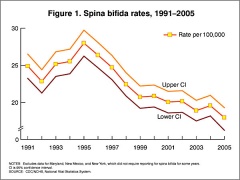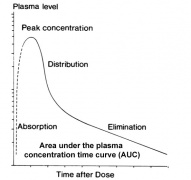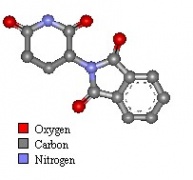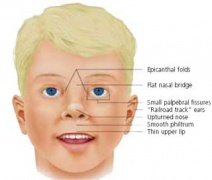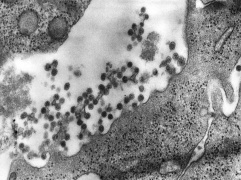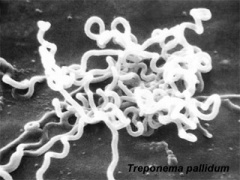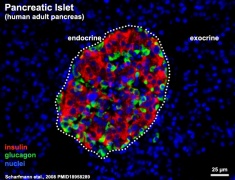Talk:Abnormal Development - Environmental
| About Discussion Pages |
|---|
On this website the Discussion Tab or "talk pages" for a topic has been used for several purposes:
Glossary Links
Cite this page: Hill, M.A. (2024, April 25) Embryology Abnormal Development - Environmental. Retrieved from https://embryology.med.unsw.edu.au/embryology/index.php/Talk:Abnormal_Development_-_Environmental |
2020
((#pmid:32680836}}
Gene-environment interactions: aligning birth defects research with complex etiology
Developmental biologists rely on genetics-based approaches to understand the origins of congenital abnormalities. Recent advancements in genomics have made it easier than ever to investigate the relationship between genes and disease. However, nonsyndromic birth defects often exhibit non-Mendelian inheritance, incomplete penetrance or variable expressivity. The discordance between genotype and phenotype indicates that extrinsic factors frequently impact the severity of genetic disorders and vice versa. Overlooking gene-environment interactions in birth defect etiology limits our ability to identify and eliminate avoidable risks. We present mouse models of sonic hedgehog signaling and craniofacial malformations to illustrate both the importance of and current challenges in resolving gene-environment interactions in birth defects. We then prescribe approaches for overcoming these challenges, including use of genetically tractable and environmentally responsive in vitro systems. Combining emerging technologies with molecular genetics and traditional animal models promises to advance our understanding of birth defect etiology and improve the identification and protection of vulnerable populations.
2019
Chlorothalonil inhibits mouse ovarian development through endocrine disruption
Toxicol Lett. 2019 Mar 15;303:38-47. doi: 10.1016/j.toxlet.2018.12.011. Epub 2018 Dec 23.
Hao Y1, Zhang H2, Zhang P3, Yu S3, Ma D3, Li L3, Feng Y4, Min L4, Shen W5, Zhao Y6.
Abstract Although many studies have investigated the toxic effects and even the reproductive toxicity of chlorothalonil, almost no studies have focused on the ovary, the organ of oocyte development. Puberty is a critical window for development of the female reproductive system. Therefore, this investigation aimed to explore the effects and underlying mechanisms of chlorothalonil at low doses on peripubertal mouse ovarian development. Chlorothalonil is frequently used in horticulture with short intervals between applications, therefore, vegetables and fruits may be potential sources of chlorothalonil contamination. For the first time, this study demonstrated that chlorothalonil inhibited ovarian development during puberty in mice, and at levels currently assumed to have no adverse health consequences for humans. Chlorothalonil exposure inhibited mouse ovarian development by increasing the number of primary follicles and decreasing the number of mature follicles. It acted by decreasing the levels of hormone production proteins, such as FSH receptor and estrogen receptor alpha, while increasing the levels of DNA repairing marker RAD51 and cell apoptosis. These results suggest that chlorothalonil may disrupt endocrine function and inhibit murine ovarian development. Therefore it may pose a potential health risk to female reproductive systems in other species, especially to the ovary. Copyright © 2018 Elsevier B.V. All rights reserved. KEYWORDS: Chlorothalonil; Development; Endocrine disrupting; Ovary; Pubertal PMID: 30586609 DOI: 10.1016/j.toxlet.2018.12.011
The association between maternal exposure to ambient particulate matter of 2.5 μm or less during pregnancy and fetal congenital anomalies in Yinchuan, China: A population-based cohort study
Environ Int. 2019 Jan;122:316-321. doi: 10.1016/j.envint.2018.11.030. Epub 2018 Nov 16.
Liu C1, Li Q2, Yan L3, Wang H4, Yu J4, Tang J4, Yao H4, Li S5, Zhang Y6, Guo Y7. Author information Abstract BACKGROUND: Few studies from western countries have linked prenatal exposure to ambient particulate matter <2.5 μm (PM2.5) with increased risk of congenital anomalies. However, the results are mixed. Particularly, evidence is limited for Chinese pregnant women. METHODS: In this retrospective cohort study, we matched the data of all pregnant women laboured in public hospitals during 2015-2016 in Yinchuan, a capital city of northwest China and the data of daily average PM2.5, nitrogen dioxide (NO2), sulphur dioxide (SO2) and ozone (O3) concentrations of the nearest monitor station. We calculated a time-dependent exposure over the entire pregnancy for each woman. We used a time varying Cox proportional hazards model to explore the association between PM2.5 exposure and the risk of congenital anomalies, after adjusting for individual confounders and other pollutants. RESULTS: A total of 39,386 singleton live births were included in the study, and 530 (1.35%) were with congenital anomalies. An increase of 10 μg/m3 in PM2.5 exposure over the entire pregnancy was significantly associated with increased risk of congenital anomalies, with hazard ratio (HR) of 1.35 [95% confidence interval (95%CI): 1.16, 1.58]. For subtype analyses, PM2.5 exposure exhibited a significant association with cardiac anomalies and other unclassifiable anomalies, with HRs of 1.60 (95%CI: 1.24, 2.08) and 1.42 (95%CI: 1.07, 1.89), respectively. The impacts of PM2.5 exposure on orofacial anomalies and musculoskeletal anomalies were not significant. CONCLUSION: Our results indicate high concentration of PM2.5 could increase the risk of congenital anomalies among Chinese, especially for cardiac anomalies. Self-protective measures involving reducing PM2.5 pollution exposure during pregnancy as well as environmental policies aiming to restrict PM2.5 emission could be helpful to reduce the burden of cognitional anomalies. Copyright © 2018 Elsevier Ltd. All rights reserved. KEYWORDS: Cardiac anomalies; Congenital anomalies; PM(2.5) exposure PMID: 30455103 DOI: 10.1016/j.envint.2018.11.030
2018
Does the antidiabetic drug metformin affect embryo development and the health of brown trout (Salmo trutta f. fario)?
Environ Sci Eur. 2018;30(1):48. doi: 10.1186/s12302-018-0179-4. Epub 2018 Dec 7.
Jacob S1, Dötsch A2,3, Knoll S4, Köhler HR1, Rogall E3, Stoll D5, Tisler S6, Huhn C4, Schwartz T3, Zwiener C6, Triebskorn R1,7.
Abstract BACKGROUND: Due to the rising number of type 2 diabetes patients, the antidiabetic drug, metformin is currently among those pharmaceuticals with the highest consumption rates worldwide. Via sewage-treatment plants, metformin enters surface waters where it is frequently detected in low concentrations (µg/L). Since possible adverse effects of this substance in aquatic organisms have been insufficiently explored to date, the aim of this study was to investigate the impact of metformin on health and development in brown trout (Salmo trutta f. fario) and its microbiome.
RESULTS: Brown trout embryos were exposed to 0, 1, 10, 100 and 1000 µg/L metformin over a period from 48 days post fertilisation (dpf) until 8 weeks post-yolk sac consumption at 7 °C (156 dpf) and 11 °C (143 dpf). Chemical analyses in tissues of exposed fish showed the concentration-dependent presence of metformin in the larvae. Mortality, embryonic development, body length, liver tissue integrity, stress protein levels and swimming behaviour were not influenced. However, compared to the controls, the amount of hepatic glycogen was higher in larvae exposed to metformin, especially in fish exposed to the lowest metformin concentration of 1 µg/L, which is environmentally relevant. At higher metformin concentrations, the glycogen content in the liver showed a high variability, especially for larvae exposed to 1000 µg/L metformin. Furthermore, the body weight of fish exposed to 10 and 100 µg/L metformin at 7 °C and to 1 µg/L metformin at 11 °C was decreased compared with the respective controls. The results of the microbiome analyses indicated a shift in the bacteria distribution in fish exposed to 1 and 10 µg/L metformin at 7 °C and to 100 µg/L metformin at 11 °C, leading to an increase of Proteobacteria and a reduction of Firmicutes and Actinobacteria.
CONCLUSIONS: Overall, weight reduction and the increased glycogen content belong to the described pharmaceutical effects of the drug in humans, but this study showed that they also occur in brown trout larvae. The impact of a shift in the intestinal microbiome caused by metformin on the immune system and vitality of the host organism should be the subject of further research before assessing the environmental relevance of the pharmaceutical.
KEYWORDS: Body weight; Glycogen; Microbiome; Pharmaceutical; Salmonid PMID: 30595998 PMCID: PMC6290717 DOI: 10.1186/s12302-018-0179-4
Dose-Dependent Teratology in Humans: Clinical Implications for Prevention
Paediatr Drugs. 2018 Aug;20(4):331-335. doi: 10.1007/s40272-018-0294-0.
Koren G1,2,3,4, Berkovitch M5,6, Ornoy A7.
Abstract
Since the inception of clinical teratology, the vast majority of scientific work has focused on identification of drugs and environmental agents causing malformations in humans as a dichotomous variable (i.e. yes or no), as well as the relative and absolute risks of such occurrences. Generally, the dose dependency of such events has not been investigated. With the establishment of large pregnancy databases, dose-dependence relationships are being uncovered for increasing numbers of medications, including valproic acid, carbamazepine, phenobarbital, lamotrigine, topiramate, and lithium. In this review we discuss newly recognized dose-dependent human teratogens and the implications to counseling and clinical management of pregnant women. The option of limiting the dose below a teratogenic threshold for women who may need these drugs may be important in managing such pregnancies. Similarly, in women that were exposed before they realized they had conceived, this new knowledge may lead to significant improvement in risk assessment. A common denominator of all studies calculating dose-dependent teratogenicity in humans is their use of total daily drug dose. None of these studies have standardized their calculations for women's body weight. It is quite possible that the teratogenic dose threshold may be below the clinically effective dose levels for specific women, and hence such information needs to be considered and applied individually. With large administrative databases now reporting on drug safety in pregnancy, more accurate data will likely emerge on dose dependency of human teratogens, and these will likely increase the accuracy of risk assessment. PMID: 29725877 DOI: 10.1007/s40272-018-0294-0
2017
Carbon Nanoparticles Inhibit the Antimicrobial Activities of the Human Cathelicidin LL-37 through Structural Alteration
J Immunol. 2017 Oct 1;199(7):2483-2490. doi: 10.4049/jimmunol.1700706. Epub 2017 Aug 16.
Findlay F1, Pohl J2, Svoboda P2, Shakamuri P2, McLean K3, Inglis NF3, Proudfoot L1, Barlow PG4.
Abstract
Host defense peptides, also known as antimicrobial peptides, are key elements of innate host defense. One host defense peptide with well-characterized antimicrobial activity is the human cathelicidin, LL-37. LL-37 has been shown to be upregulated at sites of infection and inflammation and is regarded as one of the primary innate defense molecules against bacterial and viral infection. Human exposure to combustion-derived or engineered nanoparticles is of increasing concern, and the implications of nanomaterial exposure on the human immune response is poorly understood. However, it is widely acknowledged that nanoparticles can interact strongly with several immune proteins of biological significance, with these interactions resulting in structural and functional changes of the proteins involved. This study investigated whether the potent antibacterial and antiviral functions of LL-37 were inhibited by exposure to, and interaction with, carbon nanoparticles, together with characterizing the nature of the interaction. LL-37 was exposed to carbon black nanoparticles in vitro, and the antibacterial and antiviral functions of the peptide were subsequently assessed. We demonstrate a substantial loss of antimicrobial function when the peptide was exposed to low concentrations of nanomaterials, and we further show that the nanomaterial-peptide interaction resulted in a significant change in the structure of the peptide. The human health implications of these findings are significant, as, to our knowledge, this is the first evidence that nanoparticles can alter host defense peptide structure and function, indicating a new role for nanoparticle exposure in increased disease susceptibility. PMID: 28814602 PMCID: PMC5602159 DOI: 10.4049/jimmunol.1700706
Human exposure to environmental contaminants and congenital anomalies: a critical review
Crit Rev Toxicol. 2017 Jan;47(1):59-84. doi: 10.1080/10408444.2016.1211090. Epub 2016 Aug 11.
Foster WG1, Evans JA2, Little J3, Arbour L4, Moore A5, Sauve R6, Andrés León J7, Luo W7.
Abstract
Congenital anomalies are an important cause of infant mortality and disability. Developmental exposure to environmental contaminants is thought to increase the risk for congenital anomalies. Herein, we describe a critical review of the literature conducted between February and March 2014 yielding 3057 references from which 97 unique relevant articles published from 2003 through 2014 were evaluated. Common congenital anomalies including hypospadias, cryptorchidism, anogenital distance (AGD), congenital heart defects and oral clefts were well represented in the literature whereas other outcomes such as neural tube defects, limb deficiency defects and gastroschisis were rarely described. While definitions used for congenital anomalies and methods of ascertainment were usually consistent across studies, inconsistencies were frequently found in grouping of different congenital heart defects. Despite strong links between some congenital anomalies and parental occupation, these studies are unable to provide clear insight into the specific chemicals responsible owing to lack of direct measures of exposure. In comparison, data are mixed for contaminant exposures at concentrations representative of results from contemporary biomonitoring studies. Of the environmental contaminants studied, the association between phthalate exposures and developmental abnormalities of the male reproductive tract received the greatest attention. Important limitations of the literature studied relate to adequacy of sample size, absence of or weaknesses in exposure assessment methodologies, failure to account for biological plausibility and grouping of congenital anomalies with divergent mechanisms. We conclude that the literature is inadequate at this time to support a conclusion that exposure to environmental contaminants are or are not associated with increased risks for congenital anomalies in the general population. KEYWORDS: Birth defects; congenital anomalies; contaminants; environment; toxicants PMID: 27685638 DOI: 10.1080/10408444.2016.1211090
Establishing the Embryonic Axes: Prime Time for Teratogenic Insults
J Cardiovasc Dev Dis. 2017 Sep 11;4(3). pii: E15. doi: 10.3390/jcdd4030015.
Sadler TW1,2,3,4.
Abstract
A long standing axiom in the field of teratology states that the teratogenic period, when most birth defects are produced, occurs during the third to eighth weeks of development post-fertilization. Any insults prior to this time are thought to result in a slowing of embryonic growth from which the conceptus recovers or death of the embryo followed by spontaneous abortion. However, new insights into embryonic development during the first two weeks, including formation of the anterior-posterior, dorsal-ventral, and left-right axes, suggests that signaling pathways regulating these processes are prime targets for genetic and toxic insults. Establishment of the left-right (laterality) axis is particularly sensitive to disruption at very early stages of development and these perturbations result in a wide variety of congenital malformations, especially heart defects. Thus, the time for teratogenic insults resulting in birth defects should be reset to include the first two weeks of development. KEYWORDS: birth defects; embryonic axes; heart defects; heterotaxy; laterality; situs inversus PMID: 29367544 PMCID: PMC5715709 DOI: 10.3390/jcdd4030015
Impact of sample collection participation on the validity of estimated measures of association in the National Birth Defects Prevention Study when assessing gene-environment interactions
Genet Epidemiol. 2017 Dec;41(8):834-843. doi: 10.1002/gepi.22088. Epub 2017 Oct 25.
Jenkins MM1, Reefhuis J1, Herring AH2, Honein MA1.
Abstract
To better understand the impact that nonresponse for specimen collection has on the validity of estimates of association, we examined associations between self-reported maternal periconceptional smoking, folic acid use, or pregestational diabetes mellitus and six birth defects among families who did and did not submit buccal cell samples for DNA following a telephone interview as part of the National Birth Defects Prevention Study (NBDPS). Analyses included control families with live born infants who had no birth defects (N = 9,465), families of infants with anorectal atresia or stenosis (N = 873), limb reduction defects (N = 1,037), gastroschisis (N = 1,090), neural tube defects (N = 1,764), orofacial clefts (N = 3,836), or septal heart defects (N = 4,157). Estimated dates of delivery were between 1997 and 2009. For each exposure and birth defect, odds ratios and 95% confidence intervals were calculated using logistic regression stratified by race-ethnicity and sample collection status. Tests for interaction were applied to identify potential differences between estimated measures of association based on sample collection status. Significant differences in estimated measures of association were observed in only four of 48 analyses with sufficient sample sizes. Despite lower than desired participation rates in buccal cell sample collection, this validation provides some reassurance that the estimates obtained for sample collectors and noncollectors are comparable. These findings support the validity of observed associations in gene-environment interaction studies for the selected exposures and birth defects among NBDPS participants who submitted DNA samples. KEYWORDS: birth defects; gene-environment interaction; selection bias; validation studies PMID: 29071735 PMCID: PMC5739051 DOI: 10.1002/gepi.22088
2016
Scheuerle AE & Aylsworth AS. (2016). Birth defects and neonatal morbidity caused by teratogen exposure after the embryonic period. Birth Defects Res. Part A Clin. Mol. Teratol. , 106, 935-939. PMID: 27511745 DOI.
Birth defects and neonatal morbidity caused by teratogen exposure after the embryonic period.
Abstract BACKGROUND: Pharmaceutical pregnancy exposure registries seek to evaluate temporal associations between drug exposures and adverse outcomes, particularly congenital anomalies. These registries record observed associations that may or may not be causally-related to the exposure. Most major congenital malformations (i.e., structural birth defects) result from abnormal development during embryogenesis. A standardized catalog of defects of concern (colloquially the "BPA Codes") is used both in public health surveillance programs and pregnancy exposure registries. There are, however, some anomalies that cause significant morbidity and mortality for which isolated second or third trimester exposures may be pathogenically significant. There currently exists no standardized list of defects for which exposure limited to the fetal period may be problematic. METHODS: The six-digit-code list was used to determine anomalies that might result from medication exposures limited to the fetal period. RESULTS: Defects with documented first trimester pathogenesis (e.g., anencephaly, heterotaxy) were eliminated from consideration, as were chromosomal and single gene disorders (e.g., trisomy 21, achondroplasia). The remaining defects include the following: (1) those that are known to or could reasonably originate or manifest after the embryonic period (e.g., porencephaly, cataracts); (2) those for which pathogenesis is unclear or variable enough that exposure at any gestational age might be considered relevant (e.g., club foot, microcephaly); and (3) those that include some component of abnormal growth (e.g., hemihyperplasia). "Unspecified" defects (e.g., "abnormality of the leg") were included by default because there is insufficient information to assume first trimester embryogenesis. CONCLUSION: The final result is a list of major and minor anomalies in 11 organ system categories that may be caused by teratogen exposure during the fetal period. Birth Defects Research (Part A) 106:935-939, 2016. © 2016 Wiley Periodicals, Inc. © 2016 Wiley Periodicals, Inc. KEYWORDS: congenital anomaly; fetal period; pharmaceutical pregnancy registry; pregnancy; pregnancy exposure registry; second trimester; teratogen; third trimester PMID: 27511745 DOI: 10.1002/bdra.23555
2015
Continuing harmonization of terminology and innovations for methodologies in developmental toxicology: Report of the 8th Berlin Workshop on Developmental Toxicity, 14-16 May 2014
Reprod Toxicol. 2015 Nov;57:140-6. doi: 10.1016/j.reprotox.2015.06.046. Epub 2015 Jun 11.
Solecki R1, Rauch M1, Gall A1, Buschmann J2, Clark R3, Fuchs A4, Kan H5, Heinrich V6, Kellner R2, Knudsen TB7, Li W8, Makris SL7, Ooshima Y9, Paumgartten F10, Piersma AH11, Schönfelder G12, Oelgeschläger M1, Schaefer C13, Shiota K14, Ulbrich B15, Ding X8, Chahoud I13.
Abstract
This article is a report of the 8th Berlin Workshop on Developmental Toxicity held in May 2014. The main aim of the workshop was the continuing harmonization of terminology and innovations for methodologies used in the assessment of embryo- and fetotoxic findings. The following main topics were discussed: harmonized categorization of external, skeletal, visceral and materno-fetal findings into malformations, variations and grey zone anomalies, aspects of developmental anomalies in humans and laboratory animals, and innovations for new methodologies in developmental toxicology. The application of Version 2 terminology in the DevTox database was considered as a useful improvement in the categorization of developmental anomalies. Participants concluded that initiation of a project for comparative assessments of developmental anomalies in humans and laboratory animals could support regulatory risk assessment and university-based training. Improvement of new methodological approaches for alternatives to animal testing should be triggered for a better understanding of developmental outcomes. Copyright © 2015. Published by Elsevier Inc. KEYWORDS: Developmental toxicology; Grey zone anomalies; Harmonization; Human anomalies; Malformation; Reproductive toxicology; Terminology; Variation PMID 26073002
2014
Maternal genetic variation accounts in part for the associations of maternal size during pregnancy with offspring cardiometabolic risk in adulthood
PLoS One. 2014 Mar 26;9(3):e91835. doi: 10.1371/journal.pone.0091835. eCollection 2014.
Wander PL1, Hochner H2, Sitlani CM3, Enquobahrie DA4, Lumley T5, Lawrence GM2, Burger A2, Savitsky B2, Manor O2, Meiner V6, Hesselson S7, Kwok PY8, Siscovick DS9, Friedlander Y2.
Abstract
BACKGROUND: Maternal pre-pregnancy body-mass index (ppBMI) and gestational weight gain (GWG) are associated with cardiometabolic risk (CMR) traits in the offspring. The extent to which maternal genetic variation accounts for these associations is unknown. METHODS/RESULTS: In 1249 mother-offspring pairs recruited from the Jerusalem Perinatal Study, we used archival data to characterize ppBMI and GWG and follow-up data from offspring to assess CMR, including body mass index (BMI), waist circumference, glucose, insulin, blood pressure, and lipid levels, at an average age of 32. Maternal genetic risk scores (GRS) were created using a subset of SNPs most predictive of ppBMI, GWG, and each CMR trait, selected among 1384 single-nucleotide polymorphisms (SNPs) characterizing variation in 170 candidate genes potentially related to fetal development and/or metabolic risk. We fit linear regression models to examine the associations of ppBMI and GWG with CMR traits with and without adjustment for GRS. Compared to unadjusted models, the coefficient for the association of a one-standard-deviation (SD) difference in GWG and offspring BMI decreased by 41% (95%CI -81%, -11%) from 0.847 to 0.503 and the coefficient for a 1SD difference in GWG and WC decreased by 63% (95%CI -318%, -11%) from 1.196 to 0.443. For other traits, there were no statistically significant changes in the coefficients for GWG with adjustment for GRS. None of the associations of ppBMI with CMR traits were significantly altered by adjustment for GRS. CONCLUSIONS: Maternal genetic variation may account in part for associations of GWG with offspring BMI and WC in young adults.
PMID 24670385
2013
Pregnancy: occupational aspects of management: concise guidance
Clin Med. 2013 Feb;13(1):75-9.
Palmer KT, Bonzini M, Bonde JP; Multidisciplinary Guideline Development Group; Health and Work Development Unit,; Royal College of Physicians; Faculty of Occupational Medicine. Collaborators (9)
Medical Research Council Lifecourse Epidemiology Unit, University of Southampton. ktp@mrc.soton.ac.uk
Abstract
Most pregnant women are exposed to some physical activity at work. This Concise Guidance is aimed at doctors advising healthy women with uncomplicated singleton pregnancies about the risks arising from five common workplace exposures (prolonged working hours, shift work, lifting, standing and heavy physical workload). The adverse outcomes considered are: miscarriage, preterm delivery, small for gestational age, low birth weight, pre-eclampsia and gestational hypertension. Systematic review of the literature indicates that these exposures are unlikely to carry much of an increased risk for any of the outcomes, since small apparent effects might be explicable in terms of chance, bias, or confounding, while larger and better studies yield lower estimated risks compared with smaller and weaker studies. In general, patients can be reassured that such work is associated with little, if any, adverse effect on pregnancy. Moreover, moderate physical exercise is thought to be healthy in pregnancy and most pregnant women undertake some physical work at home. The guidelines provide risk estimates and advice on counselling.
PMID 23472500
2012
Developmental toxicology: methods and protocols. Volume overview: introduction
Methods Mol Biol. 2012;889:1-5. doi: 10.1007/978-1-61779-867-2_1.
Harris C1.
Abstract The origins and history of the study of teratology and developmental toxicology span centuries of human experience. Anatomical malformations observed at birth have been described across many generations but the root causes of these events have been enigmatic and difficult to understand. Many factors may contribute to the lack of mechanistic understanding, but the miniscule size, inaccessibility, and the consequences of ethical concerns contribute heavily to the unique restrictions on developmental toxicology research. Classic teratogens, such as vitamin A, Rubella virus, thalidomide, and methyl mercury, have provided many insights into understanding the modes of chemical action that are responsible for causing defects but the specific mechanisms remain unclear. Developmental toxicology research has benefitted greatly in the past decades from discoveries made in related fields of study, including those from cancer research, stem cell biology, and developmental biology. New methods created and adapted for studies in developmental toxicology have taken on greater importance as gestational lesions can now be shown to have developmental and health consequences across the entire lifespan. PMID 22669655
Congenital anomalies among live births in a polluted area. A ten-year retrospective study
BMC Pregnancy Childbirth. 2012 Dec 27;12:165. doi: 10.1186/1471-2393-12-165.
Gianicolo EA, Bruni A, Rosati E, Sabina S, Guarino R, Padolecchia G, Leo C, Vigotti MA, Andreassi MG, Latini G. Source National Research Council, Institute of Clinical Physiology, Lecce, Italy. emilio.gianicolo@ifc.cnr.it
Abstract
BACKGROUND: Congenital anomalies and their primary prevention are a crucial public health issue. This work aimed to estimate the prevalence of congenital anomalies in Brindisi, a city in southeastern Italy at high risk of environmental crisis. METHODS: This research concerned newborns up to 28 days of age, born between 2001 and 2010 to mothers resident in Brindisi and discharged with a diagnosis of congenital anomaly. We classified cases according to the coding system adopted by the European Network for the Surveillance of Congenital Anomalies (EUROCAT). Prevalence rates of congenital anomalies in Brindisi were compared with those reported by EUROCAT. Logistic regression models were adapted to evaluate the association between congenital anomalies and municipality of residence of the mother during pregnancy. RESULTS: Out of 8,503 newborns we recorded 194 subjects with congenital anomalies (228.2/10,000 total births), 1.2 times higher than the one reported by the EUROCAT pool of registries. We observed 83 subjects with congenital heart diseases with an excess of 49.1%. Odds Ratios for congenital heart diseases significantly increased for newborns to mothers resident in Brindisi (OR 1.75 CI 95% 1.30-2.35). CONCLUSIONS: Our findings indicated an increased prevalence of Congenital Anomalies (especially congenital heart diseases) in the city of Brindisi. More research is needed in order to analyze the role of factors potentially involved in the causation of congenital anomalies.
PMID 23270371
2011
Low frequency vibrations disrupt left-right patterning in the Xenopus embryo
PLoS One. 2011;6(8):e23306. Epub 2011 Aug 3.
Vandenberg LN, Pennarola BW, Levin M. Source Center for Regenerative and Developmental Biology, Tufts University, Medford, Massachusetts, United States of America.
Abstract
The development of consistent left-right (LR) asymmetry across phyla is a fascinating question in biology. While many pharmacological and molecular approaches have been used to explore molecular mechanisms, it has proven difficult to exert precise temporal control over functional perturbations. Here, we took advantage of acoustical vibration to disrupt LR patterning in Xenopus embryos during tightly-circumscribed periods of development. Exposure to several low frequencies induced specific randomization of three internal organs (heterotaxia). Investigating one frequency (7 Hz), we found two discrete periods of sensitivity to vibration; during the first period, vibration affected the same LR pathway as nocodazole, while during the second period, vibration affected the integrity of the epithelial barrier; both are required for normal LR patterning. Our results indicate that low frequency vibrations disrupt two steps in the early LR pathway: the orientation of the LR axis with the other two axes, and the amplification/restriction of downstream LR signals to asymmetric organs.
PMID 21826245
Stockholm Convention on Persistent Organic Pollutants
http://chm.pops.int/default.aspx
2009
The Pine River statement: human health consequences of DDT use
Environ Health Perspect. 2009 Sep;117(9):1359-67. Epub 2009 May 4.
Eskenazi B, Chevrier J, Rosas LG, Anderson HA, Bornman MS, Bouwman H, Chen A, Cohn BA, de Jager C, Henshel DS, Leipzig F, Leipzig JS, Lorenz EC, Snedeker SM, Stapleton D.
School of Public Health, University of California-Berkeley, 2150 Shattuck Avenue, Berkeley, CA 94720, USA. eskenazi@berkeley.edu Abstract OBJECTIVES: Dichlorodiphenyltrichloroethane (DDT) was used worldwide until the 1970s, when concerns about its toxic effects, its environmental persistence, and its concentration in the food supply led to use restrictions and prohibitions. In 2001, more than 100 countries signed the Stockholm Convention on Persistent Organic Pollutants (POPs), committing to eliminate the use of 12 POPs of greatest concern. However, DDT use was allowed for disease vector control. In 2006, the World Health Organization and the U.S. Agency for International Development endorsed indoor DDT spraying to control malaria. To better inform current policy, we reviewed epidemiologic studies published from 2003 to 2008 that investigated the human health consequences of DDT and/or DDE (dichlorodiphenyldichloroethylene) exposure.
DATA SOURCES AND EXTRACTION: We conducted a PubMed search in October 2008 and retrieved 494 studies.
DATA SYNTHESIS: Use restrictions have been successful in lowering human exposure to DDT, but blood concentrations of DDT and DDE are high in countries where DDT is currently being used or was more recently restricted. The recent literature shows a growing body of evidence that exposure to DDT and its breakdown product DDE may be associated with adverse health outcomes such as breast cancer, diabetes, decreased semen quality, spontaneous abortion, and impaired neurodevelopment in children.
CONCLUSIONS: Although we provide evidence to suggest that DDT and DDE may pose a risk to human health, we also highlight the lack of knowledge about human exposure and health effects in communities where DDT is currently being sprayed for malaria control. We recommend research to address this gap and to develop safe and effective alternatives to DDT.
PMID 19750098
2007
The effect of hypoxia in development
Birth Defects Res C Embryo Today. 2007 Sep;81(3):215-28.
Webster WS, Abela D. Source Department of Anatomy and Histology, University of Sydney, Sydney, Australia. billweb@anatomy.usyd.edu.au
Abstract
There is increasing evidence that the oxygen supply to the human embryo in the first trimester is tightly controlled, suggesting that too much oxygen may interfere with development. The use of hypoxia probes in mammalian embryos during the organogenic period indicates that the embryo is normally in a state of partial hypoxia, and this may be essential to control cardiovascular development, perhaps under the control of hypoxia-inducible factor (HIF). A consequence of this state of partial hypoxia is that disturbances in the oxygen supply can more easily lead to a damaging degree of hypoxia. Experimental mammalian embryos show a surprising degree of resilience to hypoxia, with many organogenic stage embryos able to survive 30-60 min of anoxia. However, in some embryos this degree of hypoxia causes abnormal development, particularly transverse limb reduction defects. These abnormalities are preceded by hemorrhage/edema and tissue necrosis. Other parts of the embryo are also susceptible to this hypoxia-induced damage and include the genital tubercle, the developing nose, the tail, and the central nervous system. Other frequently observed defects in animal models of prenatal hypoxia include cleft lip, maxillary hypoplasia, and heart defects. Animal studies indicate that hypoxic episodes in the first trimester of human pregnancy could occur by temporary constriction of the uterine arteries. This could be a consequence of exposure to cocaine, misoprostol, or severe shock, and there is evidence that these exposures have resulted in hypoxia-related malformations in the human. Exposure to drugs that block the potassium current (IKr) can cause severe slowing and arrhythmia of the mammalian embryonic heart and consequently hypoxia in the embryo. These drugs are highly teratogenic in experimental animals. There is evidence that drugs with IKr blockade as a side effect, for example phenytoin, may cause birth defects in the human by causing periods of embryonic hypoxia. The strongest evidence of hypoxia causing birth defects in the human comes from studies of fetuses lacking hemoglobin (Hb) F. These fetuses are thought to be hypoxic from about the middle of the first trimester and show a range of birth defects, particularly transverse limb reduction defects. (c) 2007 Wiley-Liss, Inc.
PMID 17963271
2004
Catalog of Teratogenic Agents
by Thomas H. Shepard, Ronald J. Lemire 11th Edn (2004). http://books.google.de/books?id=vBIl2OA6BK8C&lpg=PA205&ots=FJC4k65YKo&dq=cholera%20teratogenic&pg=PP1#v=onepage&q=cholera%20teratogenic&f=false

